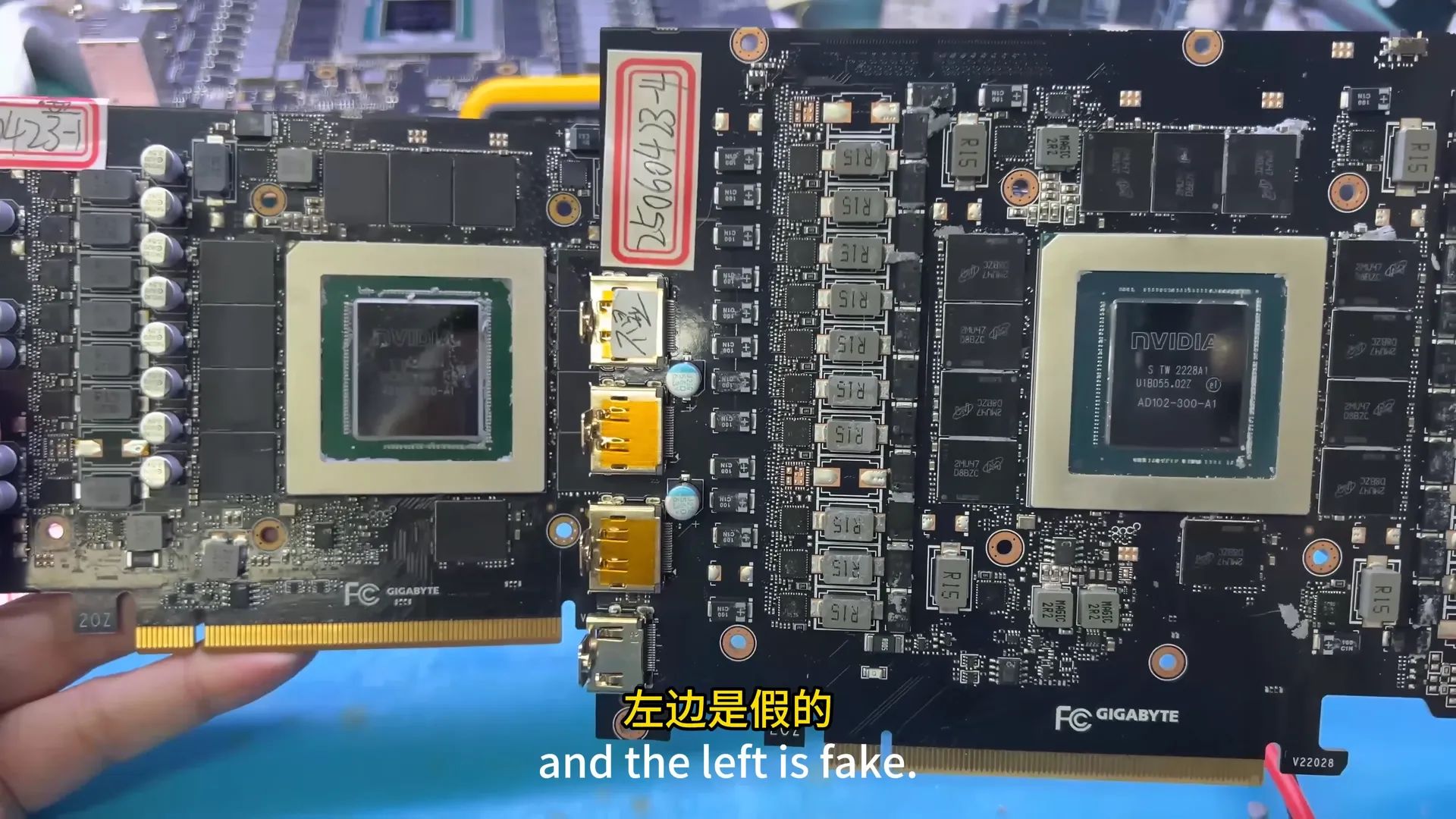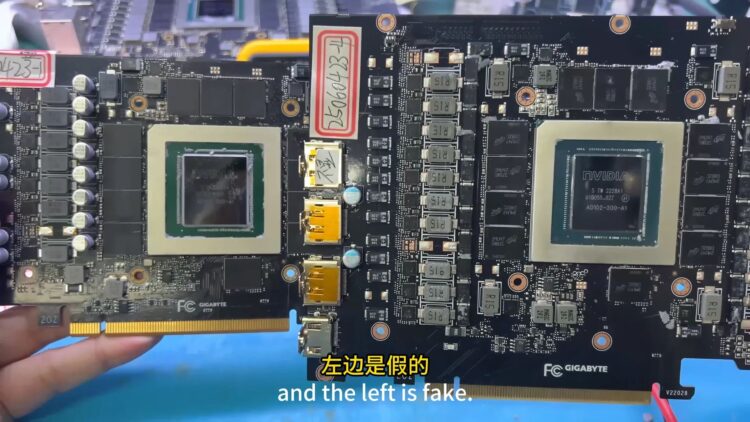A Chinese hardware repair man and YouTuber by the name of Zhang, recently posted a video, addressing a new scam involving NVIDIA’s GeForce RTX 4090 cards. After receiving four of the same GPU to repair, his teardown soon revealed that three of them were fake.
According to Zhang, the three fake cards had their PCB and GPU stripped from RTX 3090 and 3080 cards, and tarted up to make them look like legitimate RTX 4090 cards. The customer who sent them in had reportedly paid US$1,394 (~RM5,923) for each card, with all four purchased from an overseas vendor or supplier. Simply put: the customer was the unwitting victim of scammers.

Sadly, the three fake RTX 4090 cards weren’t able to run at all, and Zhang had no choice but to trash them. The situation also gives us a glimpse of how far scammers have come in their ability to create fake versions of current and popular GPUs.
This isn’t the first time we’ve reported on fake RTX 4090 cards either. Back in March, it was discovered that scammers in China were passing off RTX 3090s as flagship Ada Lovelace GPUs. The year before, another victim purchased what they thought to be a 4090, only to find out that they had paid top dollar for a naked PCB: the printed board had no GPU core, nor the accompanying memory modules.
Zhang did provide some advice to users on how to find out if the GPU they bought is indeed a genuine card. Firstly, the QR for every legitimate RTX 4090 is located at the very bottom left corner of the GPU substrate. For RTX 3090s and 3080s, that QR code is in same bottom left corner, but it is slightly higher.
Second, RTX 30 Series GPUs have their capacitor located on the top right of the substrate, while the RTX 4090 does not.

Regarding the sole working and authentic RTX 4090, Zhang said that the card did have some actual damage and still needed to be repaired. Specifically, a couple of GDDR6X memory modules and some capacitors were in bad shape but after switching them out, the card came back to life and reportedly ran fine without any stability issues.
(Source: Tom’s Hardware, Zhang via YouTube)


